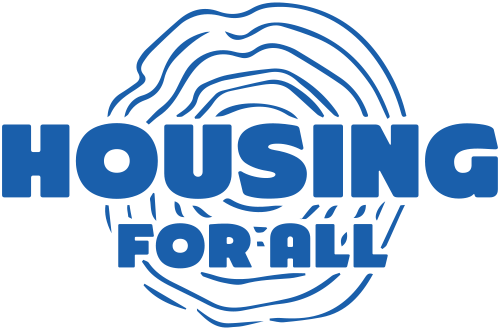More Calgarians in more neighbourhoods, with access to more jobs, more culture, and more opportunities.
We are group of pro-housing voices committed to making Calgary more accessible, affordable, and equitable.
Short-sighted policies and a tendency to resist change by creating exclusive neighbourhoods have resulted in a sprawling and increasingly unaffordable city.
We believe an abundance of homes in every neighbourhood is necessary for every wage, stage, and age.
We advocate reforms to increase Calgary’s ability to build both non-market and market housing supply.
18% of Calgary’s households need affordable housing.
- Calgary’s median household income is $98,000.*
- The median sale price for a home is $551,853. *
- Price-to-income ratio: 5.63
A price-to-income ratio above 5 is considered severely unaffordable.
The Injustices of Bad Housing Policy
Calgary is a sprawling city, covering a greater land area than Toronto, but with only a fraction of the population. Over 100,000 people have moved to Calgary in the past four years, and 100,000 more are expected to make Calgary home over the next four years.
It is illegal to build anything but a single detached home in the overwhelming majority of residential-zoned land in Calgary. This exclusive zone is known as the “yellowbelt.”
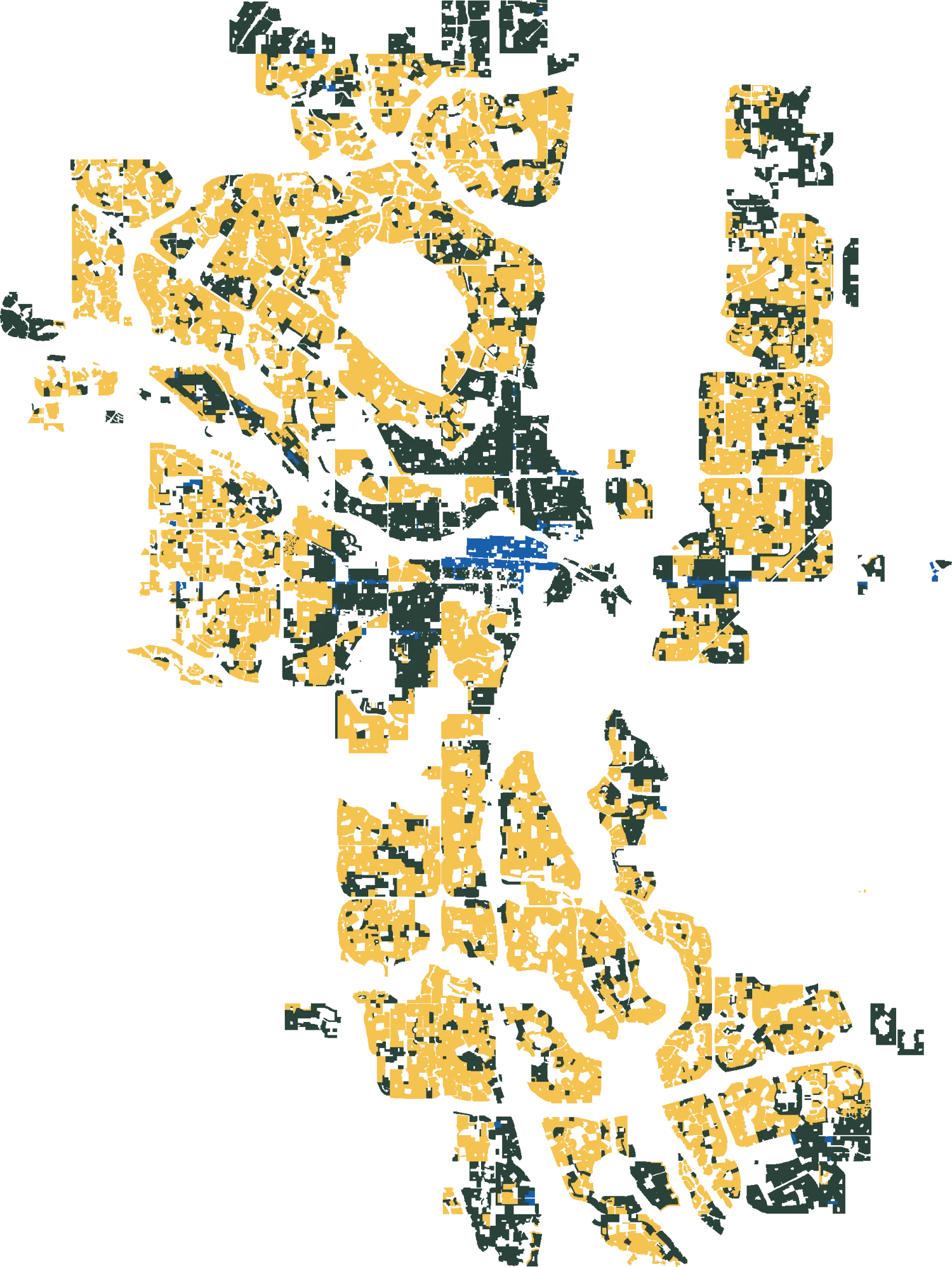
Residential zoning
Mixed used zones
Other residential zones
Single detached zoning
This exclusionary practice increases barriers for people to access affordable housing, pushing people further to the city’s edges where housing prices are lower. Simultaneously, neighbourhoods around the inner city are experiencing population decline.
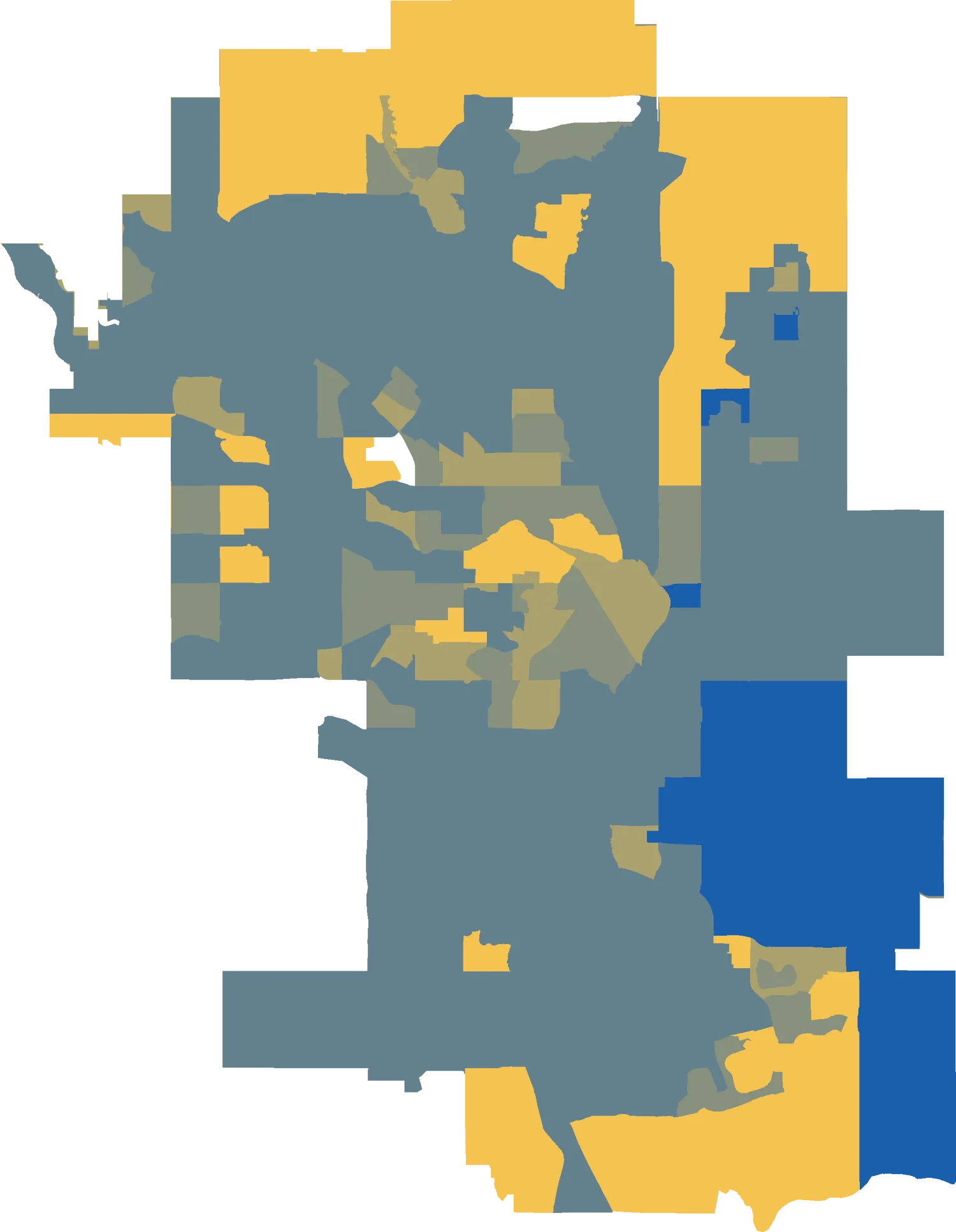
Change in total population between 2016 and 2021 census data
< -10%
-9% to 0%
1% to 5%
6% to 10%
> 11%
Overwhelmingly, employment accessible through transit is located in the inner city. As people seeking affordable housing are pushed to the edges of the city, the resources they need most – employment – is made further and further out of reach. This forces more people into vehicle ownership and long commutes, and reduces the efficiency of our transit system.
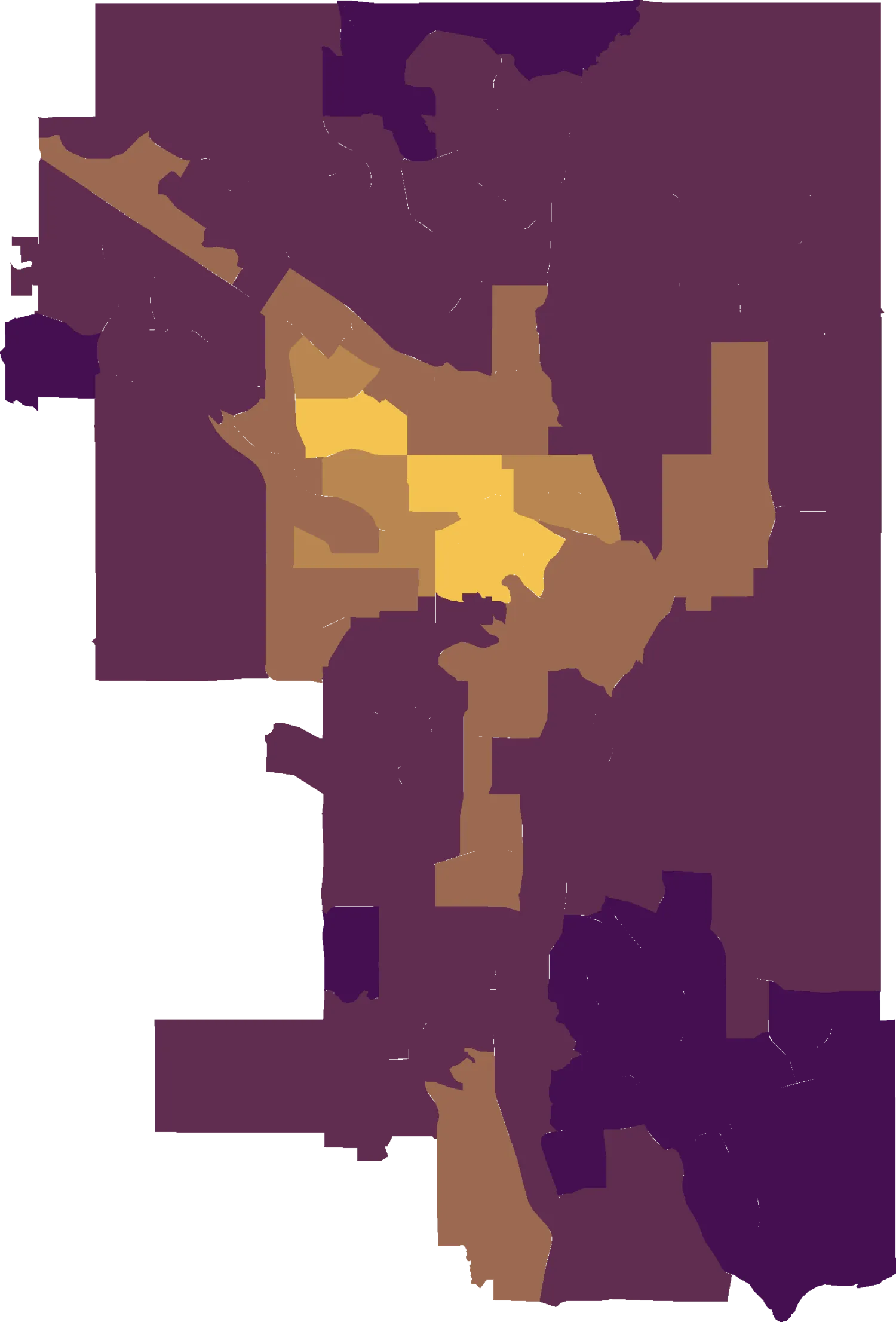
Percentage of households which drive to work
< 50%
51% to 60%
61% to 70%
71% to 80%
> 80%
Pushing more and more people away from housing, economic opportunities and amenities near the inner city means that Calgary is increasingly becoming a divided city, between those who have access and those who do not. These divisions can last for generations, leading to a less cohesive and more divided Calgary.
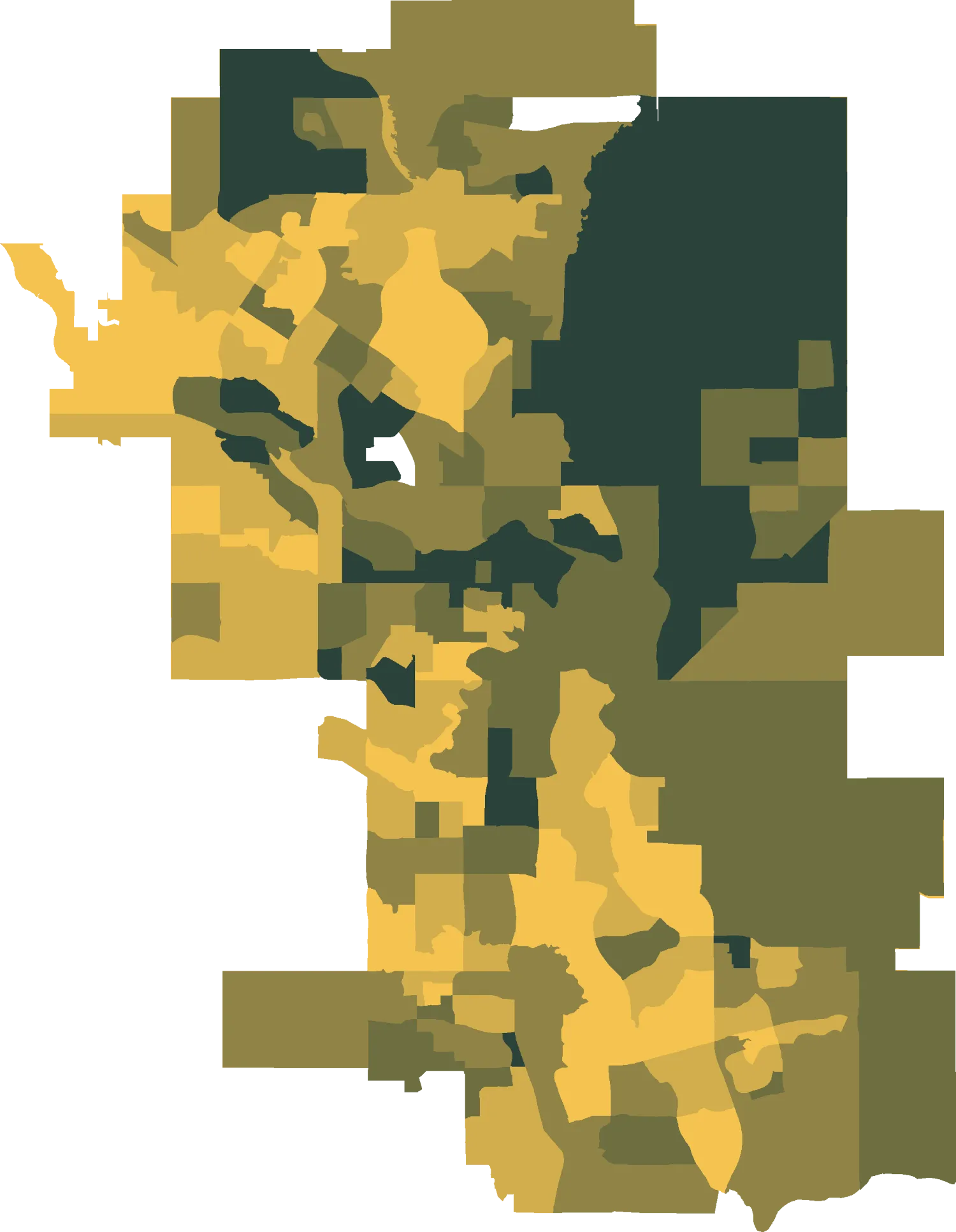
Percentage of households where more than 30% of monthly income is spent on housing
< 20%
21% to 15%
26% to 30%
31% to 35%
> 35%
These divisions do not merely create divisions based on income, but entrench historic patterns of racial exclusion. This map illustrates the distribution of visible minorities within Calgary.
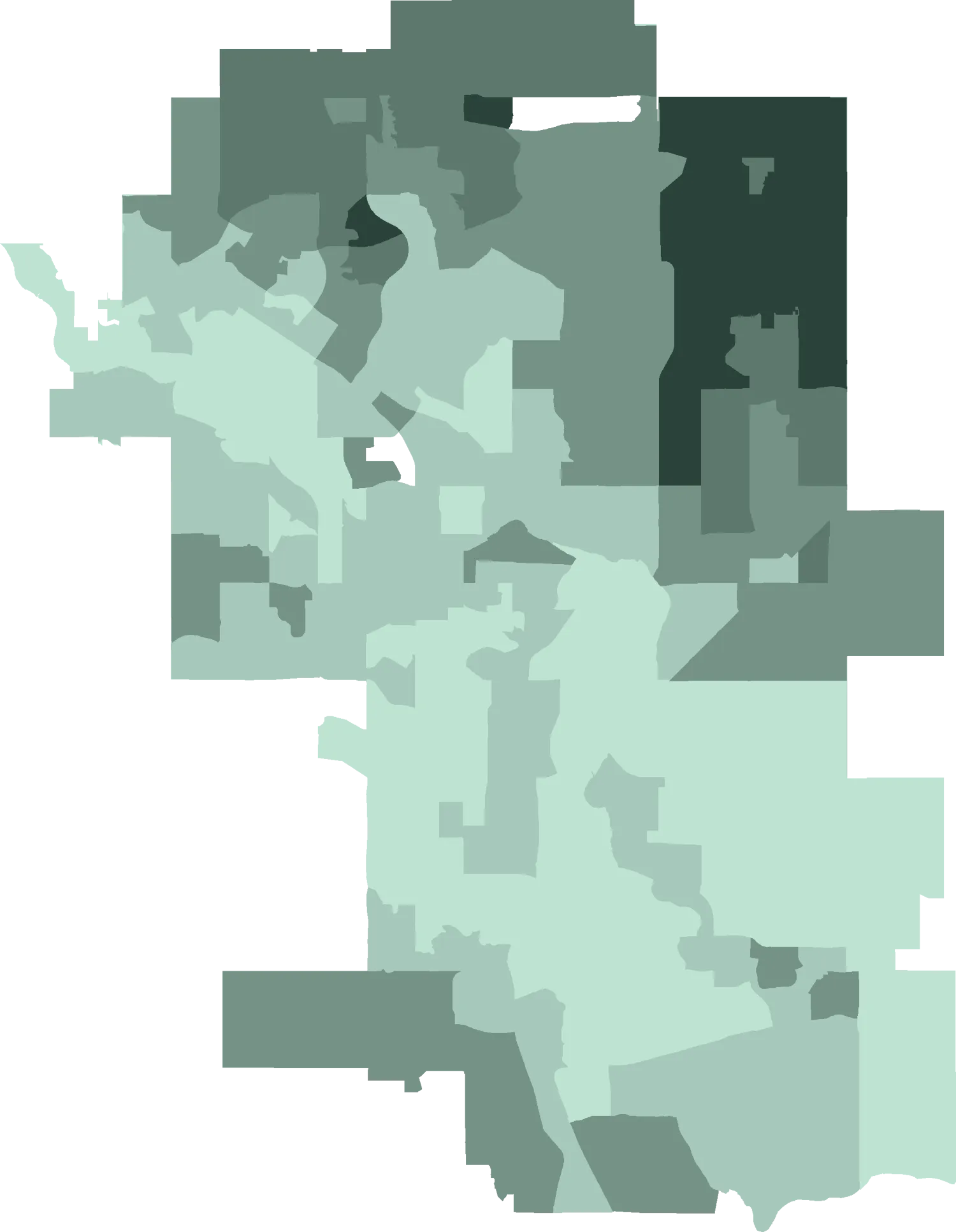
Percentage of population that is a visible minority
< 20%
21% to 40%
41% to 60%
61% to 80%
81% to 100%
As the cost of housing rapidly outpaces available wages and income, young Canadians must choose to make real compromises – living with parents longer or living with additional roommates, just to afford shelter. This amounts to a generational transfer of wealth, where young Canadians are increasingly subsidizing older generations who own housing assets.
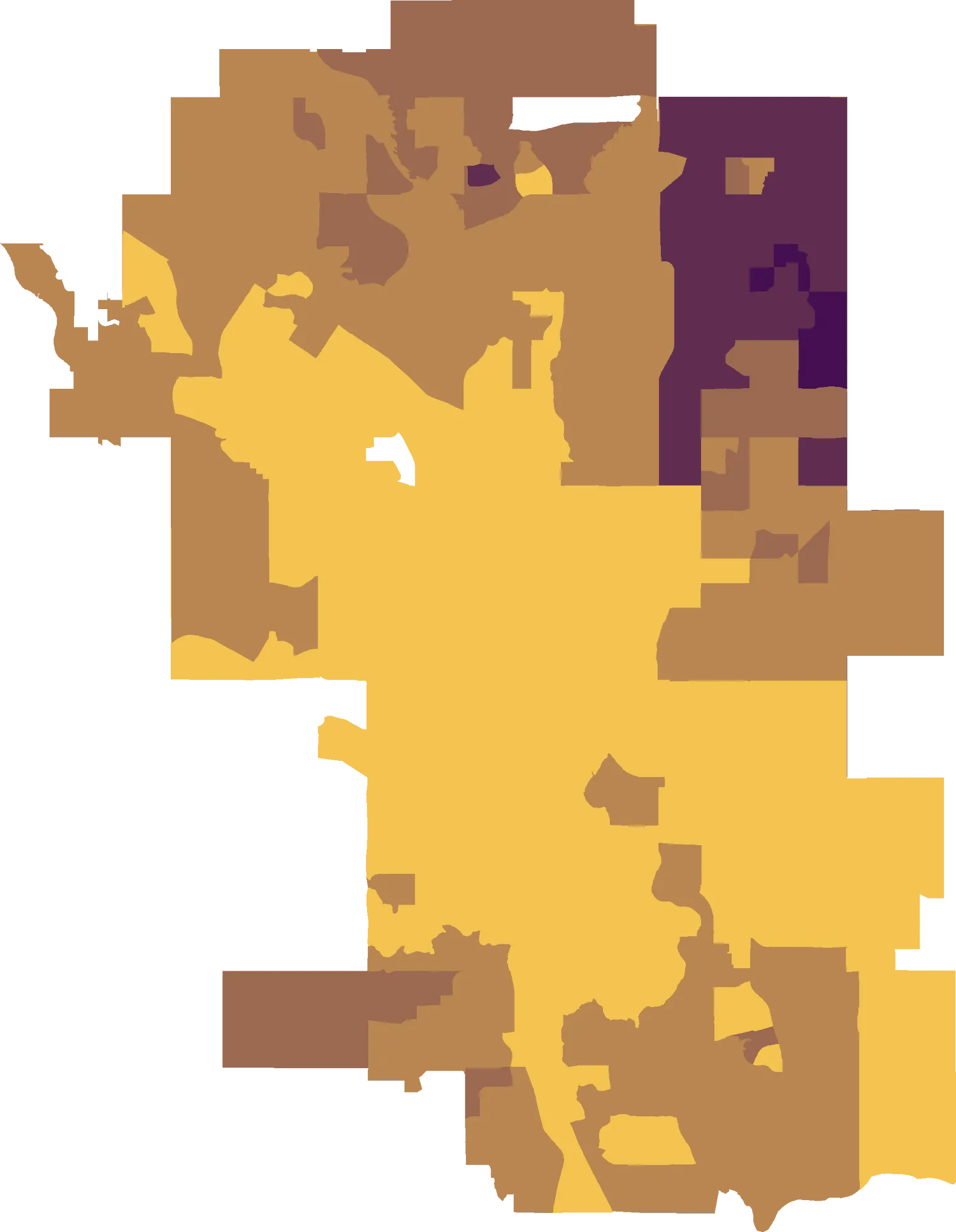
Percentage of households which are multigenerational
< 2%
3% to 5%
6% to 10%
11% to 16%
> 17%
That’s a brief summary of the current problems. What can be done about it? See Seven Steps to Housing For All in Calgary.
